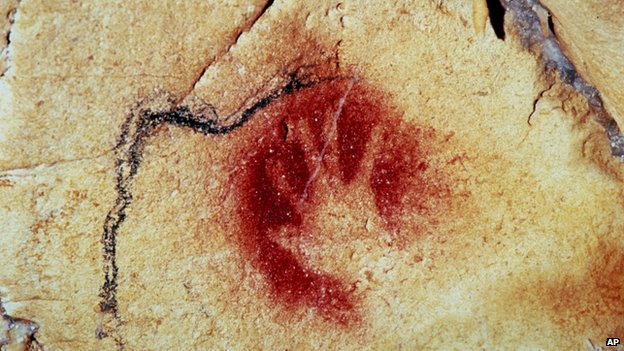'Prehistoric Sistine Chapel' gets world heritage status
http://www.bbc.com/news/entertainment-arts-27978440
A cave in southern France dubbed the "prehistoric Sistine Chapel" has been added to Unesco's World Heritage list.
The 1,000 drawings carved in the walls of the Decorated Cave of Pont d'Arc, or Grotte Chauvet, are 36,000 years old and include mammoths and hand prints.

Cave experts only discovered it in 1994 as the entrance had been concealed by a rockfall 23,000 years earlier.
It was one of several cultural and natural wonders granted the status by a committee of delegates in Doha, Qatar.
UN cultural agency Unesco said the cave, located in the Ardeche region of France featured "the earliest and best-preserved expressions of artistic creation of the Aurignacian people", who were believed to be the first modern human culture in Europe.
"The large number of over 1,000 drawings covering over 8,500 square metres (90,000 square feet), as well as their high artistic and aesthetic quality, make Grotte Chauvet an exceptional testimony of prehistoric cave art," said Unesco.
"Its state of preservation and authenticity is exceptional as a result of its concealment over 23 millennia."
The entrance was found 25 metres underground, with the cave stretching into several branches covering around 800 metres.
Fewer than 200 researchers a year are allowed inside the cave and the more remote parts remain unexplored.
The painted images, which are the oldest known human drawings, include dozens of animals such as wild cats, rhinos, bison and bears.
Remnants and prints of real ancient animals have also been found, including the remains of large cave bears which are believed to have hibernated at the site.
It is the oldest cultural property classified as a World Heritage site by Unesco.
A full-scale replica of the cave, the Cavern of Pont-d'Arc, is currently under construction nearby and is due to open next year, in a bid to share the discovery with a wider audience.
"The inscription of the Cave as a World Heritage site is a wonderful tribute to the first artists in history," said Pascal Terrasse, president of the Cavern of Pont-d'Arc Grand Project.
"It guarantees the conservation of the cave and allows us to understand and explain its significance as heritage."
Researchers believe the cave was never permanently inhabited by humans "but was instead of a sacred character" and "used for shamanist ritual practice".
"It is our whole human and artistic history which is summarized in what has been rightly called, the prehistoric Sistine Chapel," said Jean-Jack Queyranne, the president of the Rhône-Alpes Region.
"Everything is there: profile, perspective, movement, but also a desire to communicate a message of humanity and creation, which is also that which we bear through our proposal as a World Heritage List nomination or through the creation of The Cavern Pont-d'Arc."
